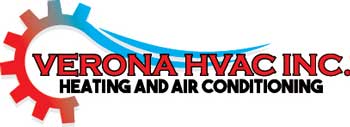
A well-designed HVAC system is vital for a comfortable and energy-efficient home, but it’s also a major investment. You deserve the most efficient comfort solutions achievable, which is why HVAC rebates are so important. They can help make sure high-efficiency furnaces, air conditioners and other equipment is more budget friendly.
HVAC efficiency standards are increasing next year, so now’s an excellent time to explore your options. A variety of companies, organizations and even government entities are offering rebates in 2023 to help everyone acquire a new, high-efficiency HVAC system.
Rebates for High-Efficiency Furnaces
Numerous manufacturers of high-efficiency furnaces extend rebates toward buying a new system. These furnaces feature energy-efficient components such as variable-speed blower motors, which allow the thermostat to refine how much heating is released. It’s a great way to decrease energy use overall. Local utilities also share furnace rebates since less energy use results in less strain on the local energy grid.
The government’s ENERGY STAR® program is also helpful for securing a furnace rebate. You can type in your ZIP Code to learn which rebates you might be eligible for. Equipment displaying the ENERGY STAR® rating means it meets your region’s standards for energy-efficient comfort.
Rebates for Air Conditioning Systems
Plenty of of the same rebates for high-efficiency furnaces are also useful for air conditioners. You can save hundreds on new installation for efficient cooling from a top brand such as Lennox. Just consult your local utility companies to learn which makes and models are entitled. What’s more, you can often combine federal and local rebates for even more savings. Don’t hesitate to learn what's out there, because it can quickly add up to 10% of a new, high-efficiency cooling system
Potential Rebates for Smart Home Accessories Like Smart Thermostats
A smart thermostat is an especially valuable improvement to your home comfort system. With intelligent programming, you can enhance the daily schedule. Utility companies highly value this kind of efficiency, and so most provide rebate programs for new smart thermostats. Over time, these rebates virtually allow you to get a free smart thermostat!
Local utility companies also offer programs where they provide lower rates for the capacity to access your thermostat during peak energy use. This helps minimize strain on the grid, especially when heat waves or cold fronts come through. When participating in this program, your thermostat will automatically be changed by a few degrees.
More Ways to Save: Tax Credits for Energy-Efficient Equipment and Home Improvement Projects
A little different than rebates, tax credits are also offered for the purchase and installation of energy-efficient HVAC equipment. For example, the Inflation Reduction Act reactivated a program in 2021 that provided credits for up to 10% of the project’s cost. The updated credits are now worth 30% of the cost and may be claimed each year rather than only once. These credits are available for a much wider variety of projects, like home energy audits, electrical, insulation, ventilation, and even your doors and windows! The programs are designed to provide the most benefits for lower-income households, maximizing the improvements to HVAC efficiency across the country.
New Legislation for Heat Pump Rebates
The recently passed Inflation Reduction Act included separate legislation referred to as the High-Efficiency Electric Homes and Rebates Act, or HEEHRA. This incentive is especially aimed toward heat pump technology, which transfers heat instead of creating it by combusting fuel. To persuade more people to change to this energy-efficient comfort system, these rebates are considerably higher versus incentives for AC units and furnaces.
If a household’s income is less than 80% of the local median, you are able to use the rebates to cover 100% of the costs of a new heat pump. Households that meet 80-150% of the average income can take care of 50% of equipment and installation costs.
